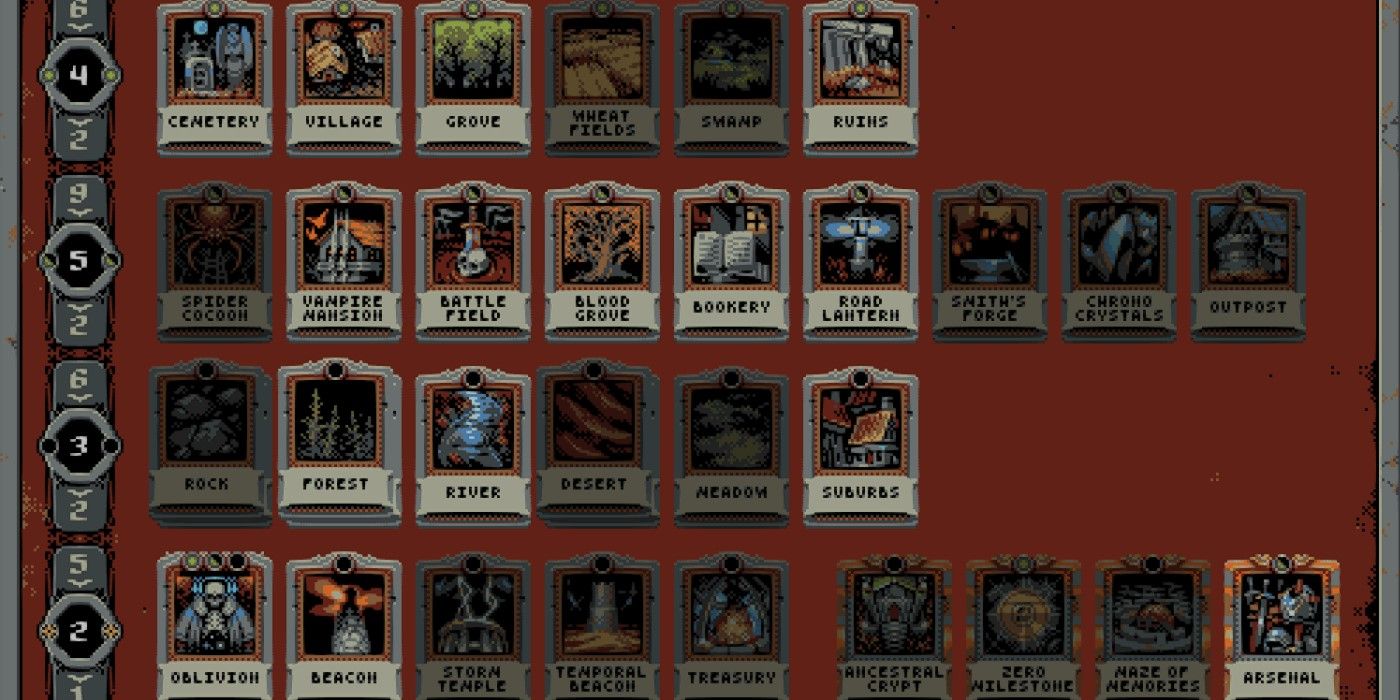Loop Hero: Deck-Building Guide (Tips, Tricks, & Strategies)
There are a lot of different cards that players will need to choose from in Loop Hero. This guide shows players some tips for building a deck.
You Are Reading :Loop Hero DeckBuilding Guide (Tips Tricks & Strategies)

While Loop Hero seems to be a pretty simple deck-building roguelike on the surface level, it is actually a very complicated game no matter how skilled a player is. As time goes on and the player unlocks more and more new content, they will be forced to keep track of all of these different mechanics at once. Players will need to know how each card interacts, what enemies are summoned by combos, and what they must unlock to progress in different ways.
Probably the most important aspect of the game though is ensuring the player’s deck has been properly optimized. There are many different things that the player has to understand about decks, and certain cards that are incredibly useful no matter the build they are going for. Players who want to survive in this game for very long will need to structure their deck correctly. This guide shows players some tips for building decks in Loop Hero.
Loop Hero – Deck-Building Guide

Know Your Class – The biggest thing that players need to learn almost immediately in Loop Hero is that each class is going to require different kinds of cards to benefit them. All three classes in this game require specific stats or scenarios to improve, so if the player doesn’t alter their deck for each one they won’t be able to make themselves as strong as possible. The Necromancer is going to require that the player use specific cards like Forests and Thickets to boost their stats really quickly in the early moments of the game, but these cards are going to be relatively useless to the Warrior class.
Understand Card Combos – This almost goes without saying, but understanding the game’s card combos is one of the most important things the player can do. The player doesn’t have to memorize each one, but they should be fairly familiar with as many of the combinations as possible. This will help the player decide what cards are going to be most useful to them during a run. If they know what kinds of combinations they would like to make then assigning cards to the deck become a pretty easy process.
Different Decks For Different Strats – This is similar to choosing cards based on classes, but players should also pick their cards based on what they are trying to accomplish during a run. Every run through Loop Hero isn’t going to end with the player defeating a boss, and honestly more times than not a run is going to get cut short early. Instead, the player is going to want to farm a lot of resources in the early game, which means that they will want to gear their deck towards that process. Cards that are useful for facing The Lich or Priestess, probably won’t serve much of a purpose if the player just wants to farm a bunch of low-level enemies to build new things back at their base. Check the deck between every run to see what can be switched out.
Learn The Always Useful Cards – On top of this though there are some cards that are almost always good to have in the deck no matter what the player is trying to do. There are certain card combinations that the player will always want to be able to pull off at a moment’s notice because they are capable of boosting the player’s stats considerably. Blooming Meadows and Mountain Peaks are really useful, so it’s a good idea to keep Meadows and Mountain/Rock cards in the deck pretty much constantly. This is also true for the Oblivion Card. This card can completely remove tile or creature on the map completely. Keep one of these on hand whenever possible to remove problematic entities without a struggle.
Some Cards Are Rarely Necessary – On the flip side though there are cards that the player should probably completely avoid using except in the rarest of circumstances. Deserts, Dunes, Forests, and Thickets, in particular, are worthless 95% of the time. The only reason to keep these kinds of cards in the deck is if the player is trying to satisfy certain class build requirements (like what was mentioned earlier with Forests/Thickets and the Necromancer) or in order to summon a couple of different enemies that the player will rarely need to fight. If the player is just trying to create a general deck to get themselves through a few runs or aren’t sure what they are looking for then some of these cards should just be avoided.
You Don’t Have to Carry The Max Amount – Another thing that the player should keep in mind as well is that they don’t have to just carry the maximum amount of cards around with them at all times. There are times where this is extremely useful, but for others, this could be more of a burden than anything else. The fewer cards in the deck mean a higher likelihood that the player will draw the specific cards that they want rather than ones they don’t really need at that time. Players should always analyze their current situation before deciding how many cards they want in the deck.
Link Source : https://screenrant.com/loop-hero-deck-building-guide-tips-tricks-strategies/
